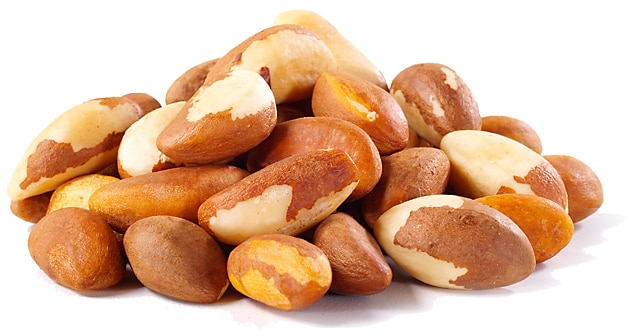We’re Nuts for Nut Milk
We all know that getting enough protein and calcium is important. Many people get these vital dietary components from milk, cheese and yogurt, but what’s a non-dairy lover to do? Nut milk may be the answer!
Nut milk is a fantastic source of vitamins and nutrients for vegans, raw foodists and those who are lactose-intolerant. The beverage has a mild, slightly sweet flavor that won’t overpower dishes. Besides beneficial calcium and protein, nut milk also offers the same healthy fats, fiber and potassium as the nuts themselves. Best of all, nut milk is incredibly easy to make at home.
 You can make nut milk from just about any raw nuts and seeds. Popular choices include almonds, Brazil nuts, cashews, walnuts, pumpkin seeds, hemp seeds and sunflower seeds. Try different combinations of nuts and seeds until you find the one you like best!
You can make nut milk from just about any raw nuts and seeds. Popular choices include almonds, Brazil nuts, cashews, walnuts, pumpkin seeds, hemp seeds and sunflower seeds. Try different combinations of nuts and seeds until you find the one you like best!
Before transforming the nuts into milk, you’ll need to soak them overnight. Pour them into a bowl, add enough water to completely cover the whole batch and leave them in a cool spot for at least eight hours. Soaking the nuts activates the enzymes that allow them to sprout. These enzymes make digesting the milk easier on the body. The soaked nuts will also be softer and easier to blend.
Pour the nuts into a strainer and rinse them under cool water. Transfer them to a food processor and add 3 cups of water for every cup of nuts. This will produce a nut milk that has the about the same consistency of 2 percent milk. If you like it a bit thicker or thinner, adjust the amount of water accordingly.
Process the nut milk until the nuts are ground into a fine paste and the liquid is milky white. At this point, you can strain the milk if you desire. Strained nut milk has none of the pulp (or fiber) left in it, but it more closely resembles cow’s milk and is easier to substitute in recipes.  Unstrained nut milk is best used in smoothies.
To strain the nut milk, pour it through a fine mesh sieve positioned over a large bowl. The liquid will take some time to drain from the pulp, so you may want to leave it alone for an hour or so. Most people discard the pulp, but you can also use it to make nut flour, raw cookies, cereal or body scrub.
Nut milk is great as-is, but if you desire you can flavor or sweeten it. The best thing about making your own nut milk is that you can adjust it to your tastes! Try adding some vanilla or almond extract or some raw cacao powder to the milk. Whole cinnamon sticks or dried ginger root can be steeped in the milk while it chills in the fridge (about 12 hours) to give it a spicy taste. Sweeten the milk with real maple syrup, raw honey, agave syrup or liquid stevia extract.
Store homemade nut milk in a sealed glass jar or pitcher and refrigerate it for about three days. The milk’s shelf life varies, but if it begins to smell sour or unusual, discard it.
